Agapanthus (Agapanthus campanulatus) is a beautiful perennial in the Pacific Northwest. The vibrant blooms provide cool-toned colors in summer, and the pest-free foliage is gorgeous. Nothing is better than watching agapanthus blooms full of bees in the late afternoon sun. But I have grown several varieties with only mixed success. So, in the true manner of gardeners, I decided to reach out to an expert agapanthus grower and breeder to get his advice.
Dan Hinkley has a wonderful garden featuring many kinds of agapanthus. He also has a nursery bed full of different cultivars bred by him and grown for retail trade, many of which he names after powerful women he admires as part of his ‘Willful Women of Windcliff’ series. There are several species of agapanthus, but Dan recommends two, both deciduous. Gardeners in the cooler parts of our region will have the most success with the hybrids available from these two species, and will enjoy two different bloom times that extend the flowering season from June to September/October. The evergreen agapanthus varieties are not as hardy but will do well in Northern California and in the South.
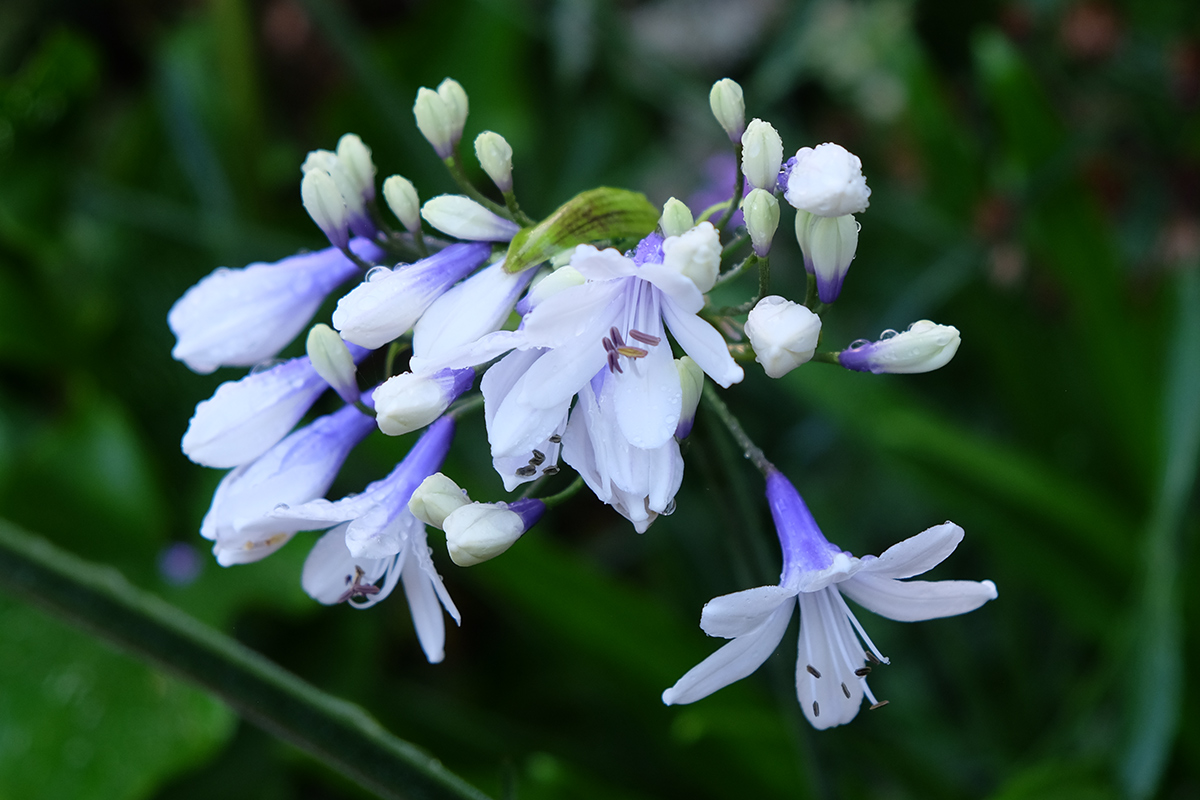
Bell agapanthus
Agapanthus campanulatus
Zones: 6–10, depending on the cultivar
Size: 2 to 3 feet tall and 15 to 20 inches wide
Bell agapanthus is the first deciduous pick, and hybridization has made it one of the hardiest. This species starts blooming in June and continues until late summer. Seedpods remain on the stems into the fall. Hybrids of this species do not always document parentage, but large, flat, strappy foliage is a distinct indicator that a cultivar has been bred from a bell agapanthus.
‘Twister’ (A. praecox subsp. orientalis × campanulatus ‘AMBIC001’, Zones 7–10) is new to the trade and available in most nurseries, with strong growth and bicolor flowers. ‘Cobalt Blue’ (A. ‘Cobalt Blue’, Zones 7–10) and ‘Midnight Sun’ (A. ‘Midnight Sun’, Zones 8–11) are also good growers, and the variegated foliage on ‘Summer Skies’ (A. ‘Summer Skies’, Zones 6–10) is lovely in the garden, but it is not as floriferous as most agapanthus.
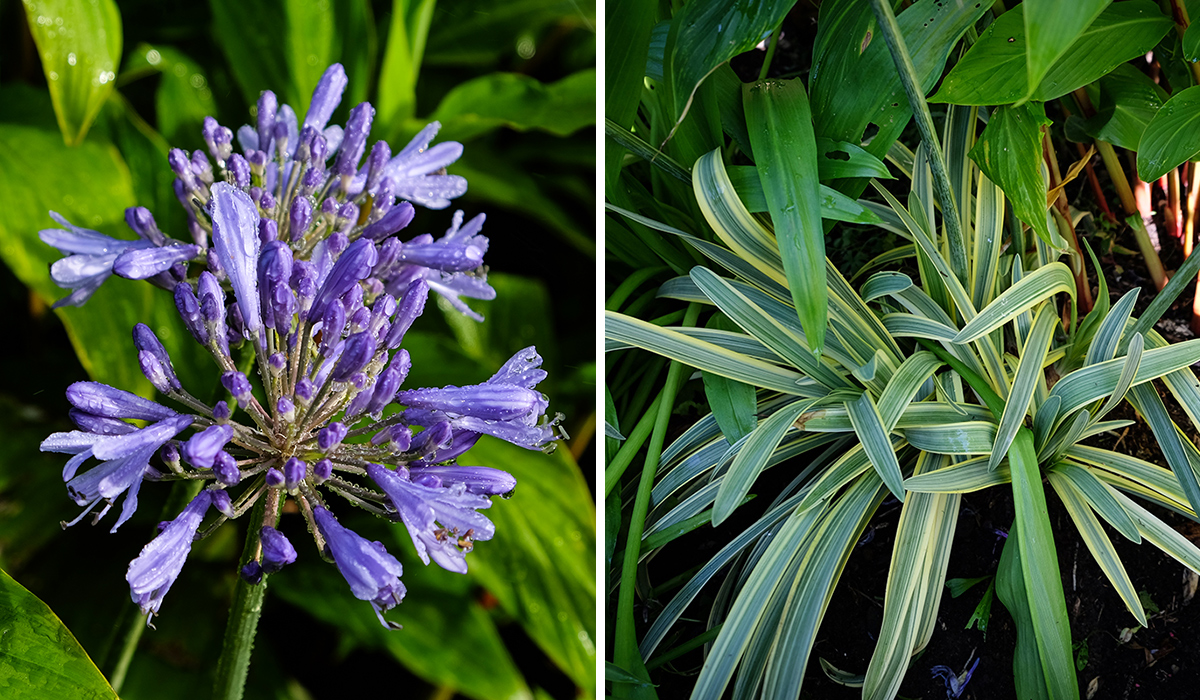
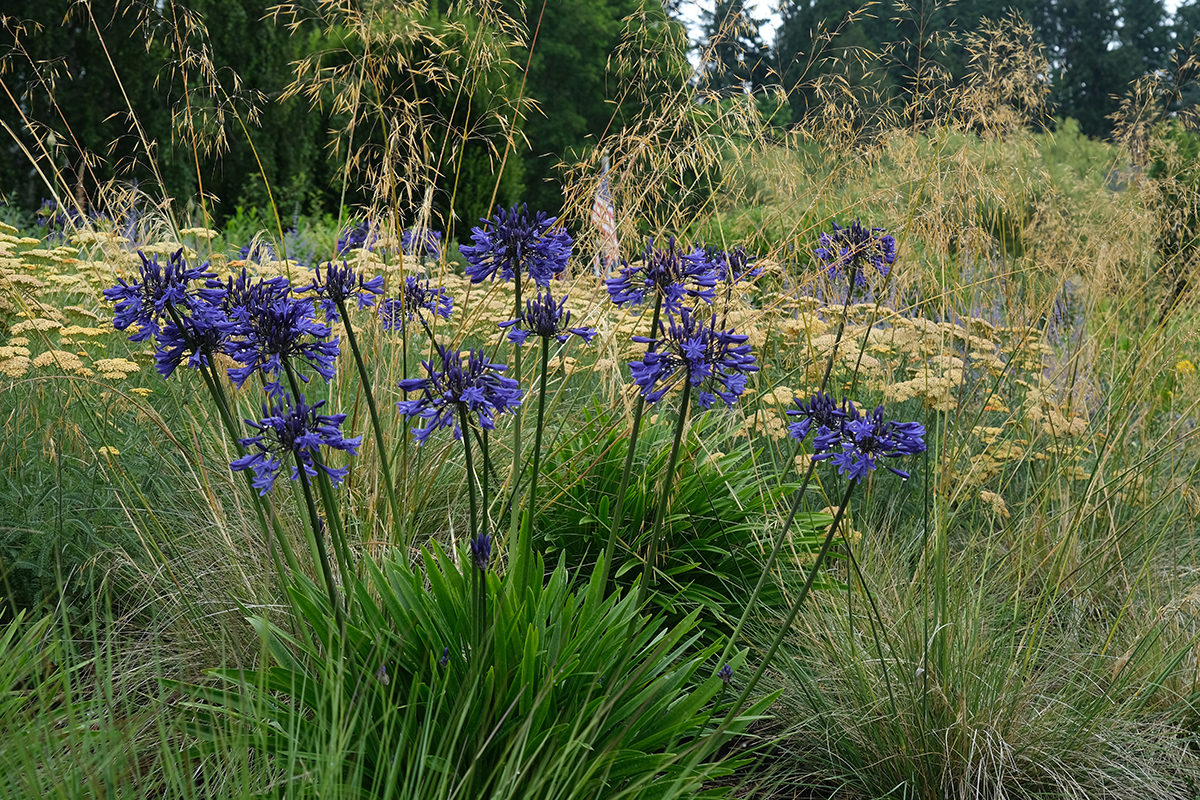
Drooping agapanthus
Agapanthus inapertus
Zones: 7–10
Size: 3 to 4 feet tall and 18 to 36 inches wide
Drooping agapanthus is the other deciduous species that Dan recommends, which produces nodding flowers that bloom later in the season and continue from mid-September to October. Dark blue ‘Graskop’ (Agapanthus inapertus spp. pendulus ‘Graskop’, Zones 7–9) has been very happy in my garden. ‘Blue Moon’ (A. ‘Blue Moon, Zones 8–11), from the UK, has a lighter blue, rounded head. Dan Hinkley hybrids like ‘Ida Lynn’, ‘Martha Stewart’ (yes, that Martha), and ‘Lyn Grinstein’ (Zones 7–10) also grow in my garden with gusto. And I have a lovely one called ‘Phantom’ that is silvery gray with a slight blush of blue.
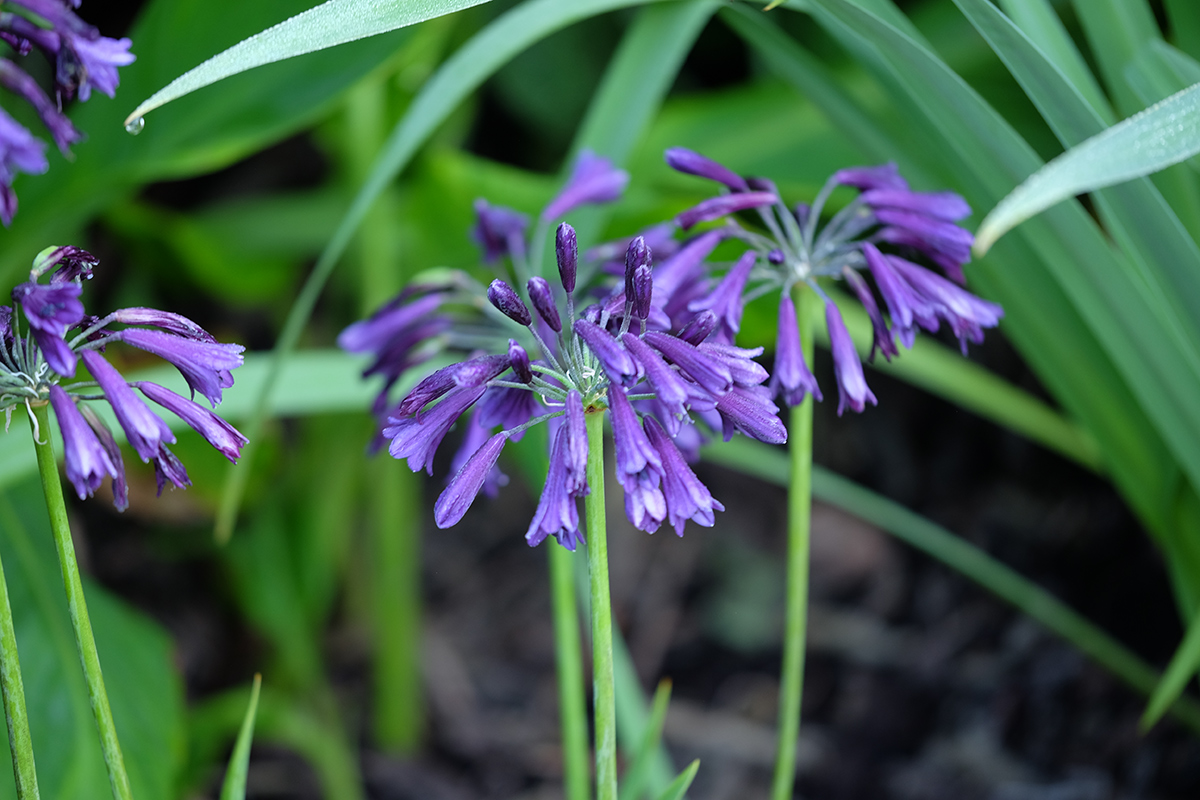
Agapanthus planting and care
The how-to of growing agapanthus is fairly simple. Full sun is a must for good flowering; some moisture is needed in the spring and dryer conditions in the summer—a perfect fit for the weather we typically get in the PNW. All agapanthus need good drainage. I opt to plant mine slightly raised. They don’t like to be covered with mulch, and I have often seen the crown of some agapanthus left just a bit out of the soil to get some baking sun. They don’t like to be crowded, root systems will overtake most other plants if planted too closely, and they will appreciate a bit of fertilizer in the spring for optimal blooms.
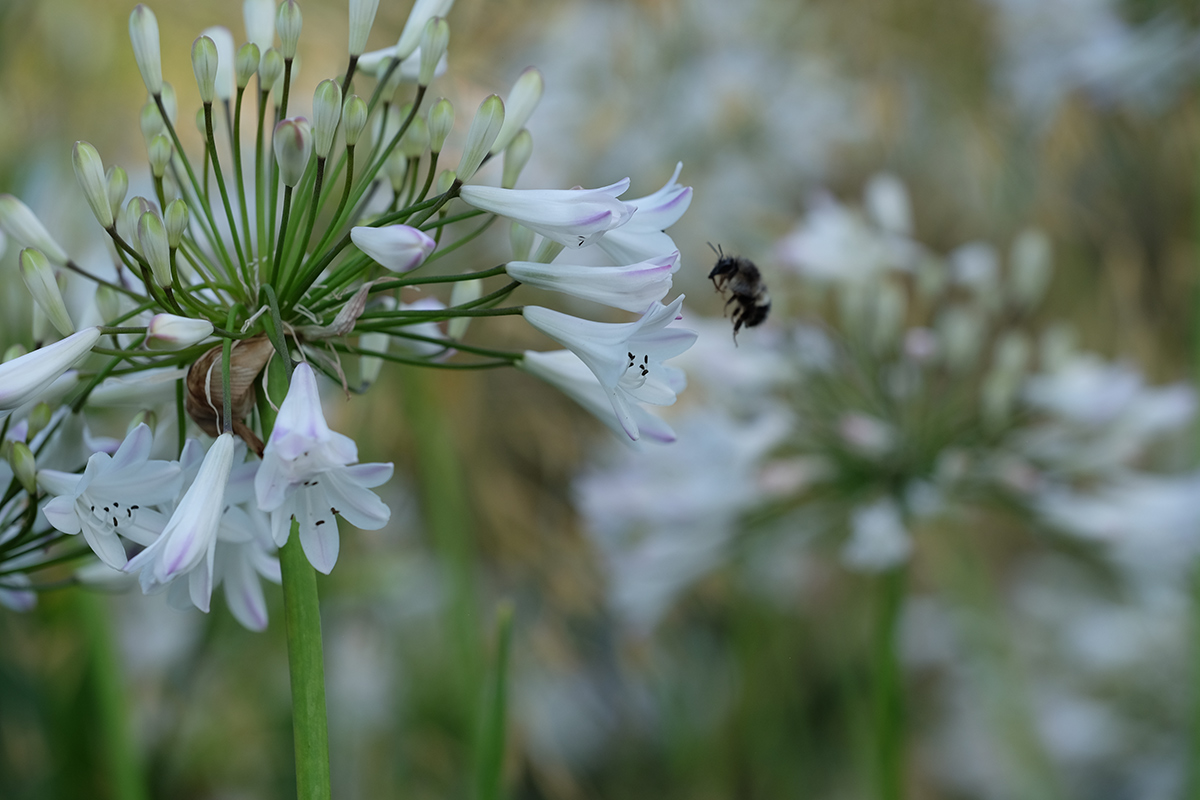
I’m so looking forward to seeing my agapanthus coming up in the garden. It will mean that summer is truly here. These tips will get you started on agapanthus gardening; it may even become an obsession.
Find more fantastic summer flowers for the Pacific Northwest:
Discuss this article or ask gardening questions with a regional gardening expert on the Gardening Answers forum.
For more Pacific Northwest regional reports, click here.
Susan Calhoun is the owner of Plantswoman Design in Bainbridge Island, Washington.
Photos: Susan Calhoun
Fine Gardening Recommended Products

isYoung Birdlook® Smart Bird Feeder with Camera
Fine Gardening receives a commission for items purchased through links on this site, including Amazon Associates and other affiliate advertising programs.
Upgraded Dual Granary Bird Feeder. G11 Smart Bird Feeder with Camera – The upgraded dual granary design allows for separate food dispensing, giving birds the freedom to choose while preserving the food’s original taste. With a 2L extra-large capacity, it reduces the need for frequent refills. The drainage design ensures the food stays dry and prevents spoilage from rain. Ideal as a camera bird feeder for birdwatching enthusiasts. 2K HD Camera & Close-Up Bird Watching. Experience clear bird watching with the G11 smart bird feeder. This bird feeder with camera features a 170-degree wide-angle lens and a 1296P HD camera, ensuring vibrant images and videos. With AI-powered recognition, it can identify over 16,000 bird species (subscription required, first month free) and provides extensive birding knowledge. Its unique design helps attract more birds to your backyard. App Alerts & Super Night Vision. The smart bird feeder camera detects motion within 0.5 seconds and sends instant notifications through the “VicoHome” app. With a 2.4G Wi-Fi connection, you can view real-time updates on bird activity right from your app. The video bird feeder also features night vision, ensuring vibrant images and videos even in low light conditions. Ideal for wild bird feeders, this advanced functionality enhances your bird-watching experience day and night.
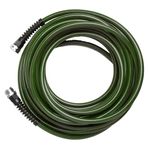
Fine Gardening receives a commission for items purchased through links on this site, including Amazon Associates and other affiliate advertising programs.
– Slim, lightweight design, is made with toxin-free polyurethane and utilizes industrial grade, lead-free fittings
– 3 Pounds
– 1200″L x 0.43″W
– Manufactured in the USA
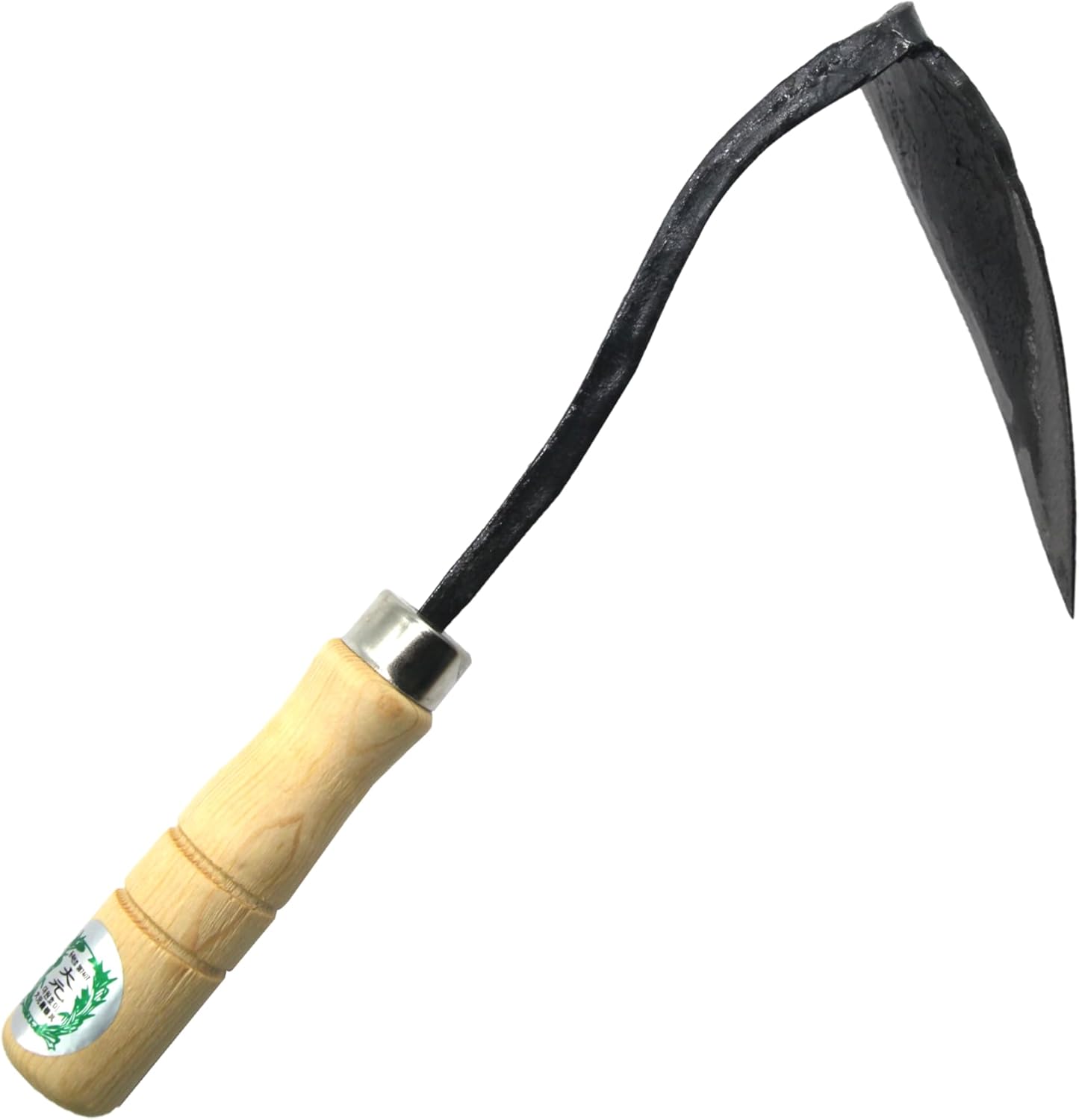
Ho-Mi Digger – Korean Triangle Blade
Fine Gardening receives a commission for items purchased through links on this site, including Amazon Associates and other affiliate advertising programs.
Versatile Tool: The Easy Digger Korean Triangle Blade Ho Mi Ho-mi is a versatile gardening tool designed for leveling and digging in home and garden settings. Efficient Design: Its unique triangular blade shape allows for easy soil penetration and efficient leveling of garden beds or landscaping areas. Durable Construction: Crafted with sturdy materials, this tool ensures long-lasting performance and reliability.
Ergonomic Handle: The comfortable handle provides a secure grip, reducing hand fatigue during extended use. Compact Size: Its compact design makes it easy to maneuver in tight spaces and store when not in use.




